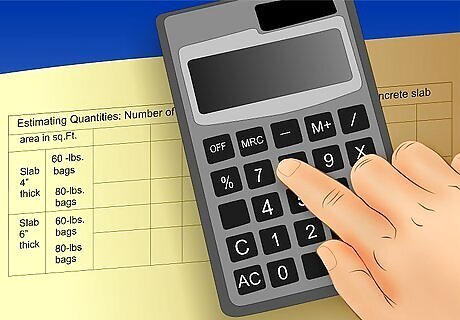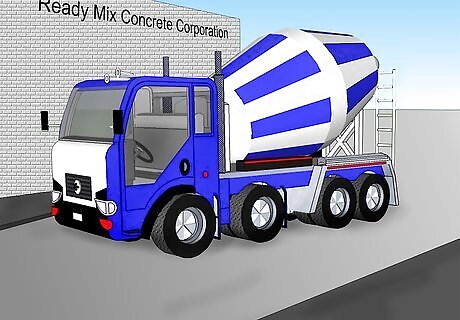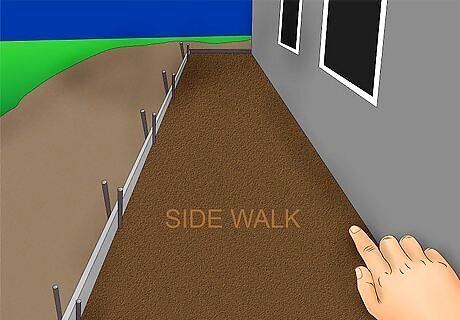
views

Calculate the right volume. In the U.S. Concrete is always ordered in cubic yards. First figure out the cubic footage, then convert to yards by dividing by 27. Here's how: multiply the length of your project times the width times the depth (4 in. = . 33 ft.) and divide the total by 27. Using a sidewalk as an example: 60 feet (18.3 m). (long) x 4 feet (1.2 m). (wide) x .33 feet (0.1 m). (deep) = 79.2 cu. ft. ÷ 27 = 2.93 cu. yards.You can also figure your cubic yards by this example: length, times, width, divided by, 12, times, thickness, divided by, 27. using the figures from above example. 60 feet (18.3 m) ( length ), times 4 feet (1.2 m) (width), divided by 12, times 4 inches (10.2 cm) (thickness), divided by 27 = 2.96 cubic yards. Concrete is cheap and nothing is worse than coming up short (except rain). A good rule of thumb is to order an extra 5 percent rounded up to the next ⁄4 yard (0.2 m). to handle spillage and uneven bases.

Order from the nearest supplier. Get fresh concrete mixed near the site, not mixed across town by some company with a lower price.

Ask for 5 percent “air entrainment” in the mix. Suppliers add a chemical that traps microscopic air bubbles to help the concrete handle the expansion and shrinkage caused by climatic changes such as freezing.

Get the right strength. Tell them you're pouring an exterior sidewalk and they'll recommend the correct “bag mix” (ratio of cement to gravel and sand). In cold climates, they'll probably suggest at least a 3,000-lb. mix. That means concrete that'll handle a 3,000-lb. load per square inch without failing.

Have your checkbook ready. You'll have to pay on delivery after the concrete's unloaded.



















Comments
0 comment